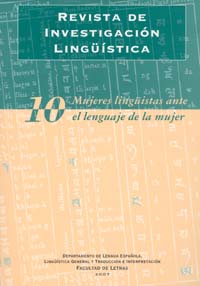EL TRATAMIENTO DE LA MUJER EN EL LÉXICO DE AMBROSIO DE SALAZAR
Abstract
The Espexo General de Gramática en diálogos is a remarkable contribution to the diachronic study of Spanish. Its author, Ambrosio de Salazar, stands out as an remarkable theorist of Linguistic Historiography in the field of foreign language teaching. His contribution as a lexicographer, however, has remained unnoticed despite the fact that the Cartagena-born grammarian devotes part of his “Jornada VI” and all his “Jornada VII” to the study of vocabulary. Through his pages and by contextualising the words selected, the author seeks to show how Spanish vocabulary was used. From this perspective, we can confirm that this section is the most original and interesting from a linguistic point of view owing to the abundance of expressions used. Based on the headwords he chooses, we have been able to establish how in his work the misogynist tendency of imposed archetypes inherited from mediaeval tradition is still present. His obsessive attitude against women is explicit from the explanations given in the entries studied. Likewise, comparison of this lexicon with the various lexicographical repertoires published in the Golden Age provides an insight into the value of the Espexo as a dictionary.Downloads
-
Abstract556
-
PDF (Español (España))233
The works published in this magazine are subject to the following terms:
1. The Publications Service of the University of Murcia (the publisher) preserves the economic rights (copyright) of the published works, and favors and allows the reuse of same under the license of use indicated in point 2.
2. The papers are published in the electronic edition of the magazine under a Creative Commons Attribution-NonCommercial-NoDerivative 3.0 Spain license (legal text). Papers may be copied, used, disseminated, transmitted and publicly exhibited if the following requirements are met: i) The authorship and the original source of its publication (magazine, editorial and URL of the work) must be cited; ii) The works cannot be used for commercial purposes; iii) The existence and specifications of this user license must be explicitly mentioned.
3. Self-archiving conditions. Authors can electronically disseminate pre-print versions (version before being evaluated) and / or post-print versions (version evaluated and accepted for publication). This makes possible its circulation and diffusion earlier and with it a possible increase in its citation and reach among the academic community. RoMEO color: green.









